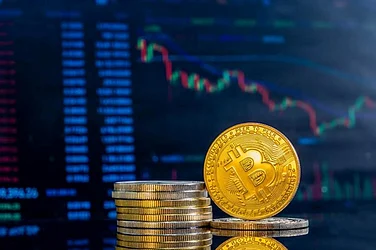Stablecoin operation hinges on one basic promise: stability. Instead of the highly volatile prices of mainstream cryptocurrencies, stablecoins work to maintain a strict price, usually pegged to a fiat currency such as the US dollar, euro, or even a commodity such as gold. But what keeps it stable and makes individuals have faith in putting their trust in a completely digital token on the blockchain? The solution is in two interrelated mechanisms: backing and redemption. The two mechanisms combined provide the cornerstone for how stablecoin work functions and gets legitimacy in international markets.
The Role of Backing in Stablecoin Work
Backed is the underlying concept of stablecoin functionality. Without reserves to back their worth, stablecoins would be little more than unbacked digital promises without any assurance of worth. The backing process ensures users that each unit of a stablecoin that is present in circulation in the market is covered by an equivalent reserve of actual assets.
The reserve forms can be quite diverse. Stablecoins which are fiat-backed keep ordinary currency in a bank, in some instances in one-to-one relation. Stablecoins which are commodity-backed have reserves in proportion to physical commodities like gold or oil. In more recent times, stablecoins backed by cryptocurrencies are being developed, utilizing cryptocurrencies like Ethereum or Bitcoin held in smart contracts as collateral. There are also hybrid-reserve models where issuers distribute the reserves across various classes of assets to attain reduced risks.
For instance, if a stablecoin is declared to be backed by the US dollar, then it can hold dollars in supervised bank accounts or buy short-term US Treasury bills. In this way, the stablecoin is not just code but also supported by physical, traceable value. This method functions not merely within the reserve but even in the transparency of reporting. Some issuers will issue periodic audits or proof-of-reserve reports, showing that their tokens really are backed. Without such guarantee, stablecoin functionality would become unreliable, and user trust would soon disappear.
Support also serves as a shock absorber in periods of economic instability. For example, in hyperinflation or bank unsoundness countries, individuals flee to stablecoins as a safe haven. Such stablecoins' legitimacy depends solely on whether their issuers can genuinely demonstrate that reserves exist to cover all redemption requests.
Redemption: Converting Stablecoins Back to Real Assets
Although support guarantees there is value, redemption guarantees stablecoin operates functional and effective. Redemption is how owners of stablecoin get to trade their tokens for the same value in the reserve backing asset. This capacity to get tokens back in "real-world" money is what makes stablecoins a viable financial instrument.
Let's take an example: a user holding 500 units of a dollar-backed stablecoin. Redemption enables him to go up to the issuer and get 500 US dollars in return for it. This direct convertibility gives assurance to users that their stablecoin is not only backed in theory but also in practice.
Redemption also has a key role to play in the stabilization of market prices. If a stablecoin falls below its peg—trading at $0.98 instead of $1—arbitrage purchasers are able to purchase in bulk at discount and resell them for whole dollars. The loop brings profits to traders and returns the price of the stablecoin to its peg. When the price rises above $1, issuers are able to issue more tokens against reserves to take up demand and supply.
This self-leveling aspect is the key to stablecoin functionality. It maintains prices pegged and avoids chronic instability. Without redemption, even very well-backed stablecoins will de-link from their target value, causing suspicion in the market and eventual collapse.
Why Backing and Redemption Together Build Trust
The real power of stablecoin operation is the synergy between backing and redemption. Both cannot be credible in the absence of the other. A highly conservative token without any route of redemption would be illiquidity-causing, something that will lead consumers to question whether they will ever receive their value. Alternatively, a weakly reserved redeemable token is susceptible to insolvency—consumers can scream for value that simply does not exist.
Collectively, these processes mimic the trust mechanism of conventional banking systems. While banks are supposed to hold reserves and draw on deposits at will, issuers of stablecoins use backing and redemption to offer users some security and freedom. This synthesis of heritage finance wisdom on blockchain platforms builds confidence not just among retail consumers but institutional participants, companies, and regulators too.
Transparency, Regulation, and Accountability
Another key area of stablecoin activity is regulation of backing and redemption. Governments and financial regulators worldwide are monitoring stablecoin issuers to ensure that they have sufficient reserves as well as have facilities for redemption. For instance, regulation may stipulate that issuers hold reserves in very liquid assets such as cash or Treasury bills to be able to redeem even in the event of market shock.
Transparency is key here. Issuers that have a habit of publishing regularly audited reports, or resort to blockchain-based proof-of-reserves, earn trust. Transparency over reserves has earlier, however, caused total panic and price volatility in some stablecoins. The message is clear: stablecoin work cannot gain the confidence of a global user base without transparent support and easy redemption.
The Broader Implications for Stablecoin Work
Redeemability and sponsorship are more than mere mechanistic functions—they enshrine the wider role stablecoins perform within the financial system. Stablecoins, by providing stability and trust, have become the fulcrum of cross-border remittances, DeFi usage, exchange trading pairs, and even a hedge for currencies in currency-collapsing economies.
For those who live in nations with unstable domestic currencies, stablecoin operations give them a way to access stored value that is more stable. For companies, it allows seamless global payment without the cost and time of conventional banking systems. Stablecoins are the oxygen that brings life to lending, borrowing, and yield-generating platforms in decentralized finance, where faith in their collateralization and redemption is not optional.
Ultimately, stablecoins' authenticity rests not on such guarantees as can be found theoretically but on open financial architecture that is auditable and testable by the consumers. By having each token backed by actual reserves and being exchangeable for actual-world assets, stablecoin functionality does accomplish its ultimate purpose: generating stability in the frequently volatile realm of digital currency.

























